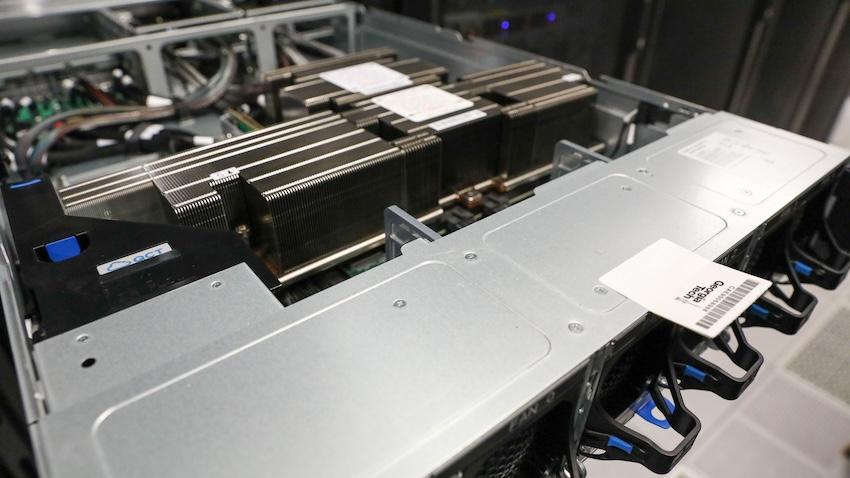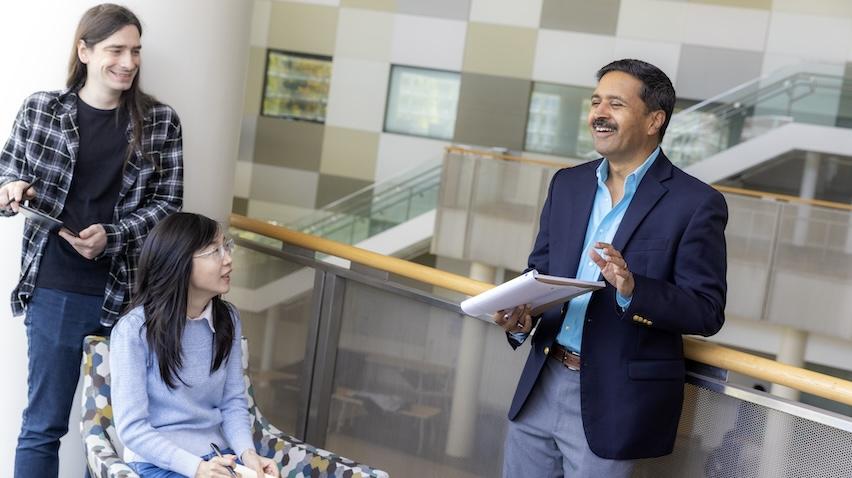
Professor Awarded Two Fellow Titles for Modeling and Simulation in Same Week
Earning the distinction of fellow for scientific societies is an honor that many researchers spend their careers working toward. For School of Computational Science and Engineering (CSE) Regents’ Professor Richard Fujimoto, this was an honor earned not only once, but twice in early December.
Fujimoto was named an Institute of Electrical and Electronics Engineers (IEEE) Fellow and a 2019 Interservice/Industry Training, Simulation and Education Conference (I/ITSEC) Fellow for his work in parallel and distributed discrete event simulation. The announcement for both of these recognitions came only two years after he was named an Association for Computing Machinery Fellow in 2017.
According to the IEEE association, the IEEE Fellow is the highest grade of membership and is recognized by the technical community as a prestigious honor and an important career achievement. No more than one-tenth of one percent of the society’s membership is selected for the fellow grade each year.
I/ITSEC is the world’s largest modeling, simulation, and training conference. Each year, one individual is selected as the I/ITSEC Fellow, an award that is given in recognition of a researcher’s exceptional contributions to the field of modeling and simulation.
In this field, discrete event simulations are used to model operations within a system and have uses in a wide variety of applications. Fujimoto has authored and co-authored hundreds of technical papers on the as well as several books subject, which span application areas including transportation systems, telecommunication networks, and multiprocessor and defense systems.
Among his various accomplishments, Fujimoto cited one body of work that had perhaps the greatest impact: “The High Level Architecture (HLA) for modeling and simulation (M&S) originally came out of the U.S. Department of Defense (DoD) at a time when their strategy was shifting from single stand-alone simulators to networking many simulators together,” said Fujimoto.
“HLA created a common architecture for all modeling and simulation in the DoD. I was responsible for leading the team responsible for defining the time management services that enabled different simulators to synchronize their interactions.”
Fujimoto’s team completed the HLA effort in 1996, which became standardized with IEEE 1516, and is still in use today.
Now, much of Fujimoto’s current work focuses on executing discrete event simulations for mobile devices.
“In mobile computing environments, energy consumed by the computation is a large concern because it affects battery life. So, focusing on how to build energy efficient distributed simulations is where a lot of my work has been focused in the past couple of years,” he said.
Fujimoto’s work in the field of discrete event simulation began in the 1980’s, long before mobile environments were a significant concern. However, as the fields of analytics and computing has shifted toward smart phones and mobile computing, Fujimoto urges the modeling and simulation community to keep pace by developing approaches focused on running simulations on mobile devices that interact with live data streams.
Fujimoto said, “We moved from a phase where analytics are no longer restricted to the scientists, engineers, or experts in an area. Now, analytics are being used by everyone and mobile devices are being used everywhere.”
“And my message to the simulation community is that modeling and simulation needs to be more widely used in mobile devices,” he said.
We are thrilled to announce Vivek Sarkar as the new Dean of the College of Computing at Georgia Tech! With a distinguished career spanning academia and industry, Sarkar's leadership promises to elevate our community to new heights. https://t.co/2mX5D46cJz pic.twitter.com/LxpLTCXWZV
— Georgia Tech Computing (@gtcomputing) April 12, 2024
@GeorgiaTech's dedication to excellence in computer science (CS) has been recognized once again, with the latest U.S. News and World Report rankings unveiling the institution at 7th place overall for graduate CS studies.https://t.co/qavNUSTb7n pic.twitter.com/BcGyGBQld8
— Georgia Tech Computing (@gtcomputing) April 10, 2024


